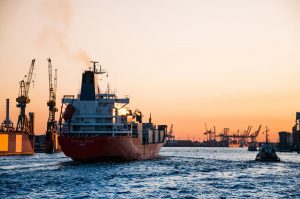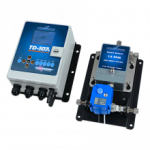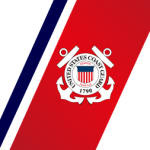Marine Oil in Water Monitoring Technology
 A practical overview of the oil in water monitor technology used aboard vessels to track and record water quality and treatment performance. This comparison highlights the advantages, drawbacks, and operational limitations of various technologies, enabling operators and engineers to select the most effective solutions for managing ballast water, bilge water, and potable water. This blog examines the systems designed to monitor water discharges from vessels, with a primary focus on bilge water separators, Oil Discharge Monitoring Equipment (ODME) fitted on tankers, and exhaust gas scrubber washwater systems.
A practical overview of the oil in water monitor technology used aboard vessels to track and record water quality and treatment performance. This comparison highlights the advantages, drawbacks, and operational limitations of various technologies, enabling operators and engineers to select the most effective solutions for managing ballast water, bilge water, and potable water. This blog examines the systems designed to monitor water discharges from vessels, with a primary focus on bilge water separators, Oil Discharge Monitoring Equipment (ODME) fitted on tankers, and exhaust gas scrubber washwater systems.
A wide range of technologies is available for detecting oil-in-water, most of which rely on optical measurement principles. Their performance, however, is influenced by several variables, including the oil concentration, the presence of suspended solids such as rust, chemical contaminants, and overall turbidity. Some sensor types demonstrate stronger resilience under certain conditions than others, but because bilge composition and volume are highly variable, selecting the most effective technology always carries a degree of uncertainty.
Which Oil Monitoring Technology is Best for Your Vessel?
To help you quickly identify the best solution for your vessel, the table below provides an at-a-glance comparison of the primary oil in water monitoring technologies based on their core strengths, weaknesses, and ideal maritime applications.
| Technology | Primary Advantage | Primary Drawback | Best For |
| Scattered Light | Cost-effective & widely used | Sensitive to solids/turbidity | Standard bilge water (15 PPM alarms) |
| Fluorescence | High accuracy, less affected by solids | Higher initial cost | Scrubber washwater, bilge & dirty water |
| Absorbance | Near laboratory-grade accuracy | High cost, less common in marine | Complex chemical & oilfield applications |
| Microscopy | Excellent at differentiating oil, gas, & solids | Susceptible to lens fouling | Scrubber washwater, R&D applications |
Different Types of Marine Oil in Water Monitor Technologies
Scattered Light:
 Scattered light measurement technology is the primary choice for Oil Content Monitors (OCMs) aboard vessels due to its comparatively low cost and its independence from water color. However, excessive solids can affect the readings, and the system must be calibrated to specific oil types, which can lead to deviations if the oil varies. A scattered light OCMs measure the intensity of light as it passes through water to indicate oil concentration. The oil particles present in the sample will refract (or “scatter”) light in correlation to the levels of oil present in the water. The higher the oil content, the greater the degree of scattering.
Scattered light measurement technology is the primary choice for Oil Content Monitors (OCMs) aboard vessels due to its comparatively low cost and its independence from water color. However, excessive solids can affect the readings, and the system must be calibrated to specific oil types, which can lead to deviations if the oil varies. A scattered light OCMs measure the intensity of light as it passes through water to indicate oil concentration. The oil particles present in the sample will refract (or “scatter”) light in correlation to the levels of oil present in the water. The higher the oil content, the greater the degree of scattering.
Receivers measure the amount of light scattered, from which the concentration of oil in the water can be calculated and measured. Scattered wavelength technologies transmit a single wavelength of light, such as ultraviolet, infrared, or white light, with various filters. Each wavelength has its advantages and disadvantages. For example, infrared light provides a stable measurement across a wide range of temperatures.
Receivers can be placed all around the optical path. Rivertrace’s scattered light sensors measure forward scatter, which can be collected at multiple angles to provide additional information that can account for solids in the sample. Solids will also scatter light, but the solids’ irregular shapes do not refract light in the same way as oil’s spherical molecules. By using multiple angles of sensors, the shape of the molecules is highlighted and enables solids to be discounted.
Scattered light has two (2) primary challenges that can affect accuracy:
- Fall-Off Phenomenon: A challenge with scattered light measurements is a phenomenon known as “fall-off”. Scattering of light peaks around 100-150 PPM of oil, after which the concentration of oil is so high that it absorbs much of the light transmitted, and the proportion of scattered light appears to fall. The fall-off level is determined by the configuration of the measuring cell as well as the light wavelength and angle at which scattered light is measured. If not accounted for, fall-out can lead to disastrously misleading oil concentration readings.
- Light Source Degradation: Degradation of the light source over time is another potential source of inaccuracy. This will cause a lower level of light to be transmitted and received. If not accommodated, degradation of the light source can lead to inaccurate results as lower scattered light is recorded. In the first instance, to keep it constant, the feedback circuit should monitor the power to the light source. A more reliable way of preventing the challenges caused by a degrading light source is to measure not only the scattered light received, but additionally, the amount of light transmitted.
Need an IMO-compliant oil in water monitor? Separator Spares & Equipment supplies complete oil in water monitor units for Brannstrom BilgMon 488 Bilge Alarm, Deckma OMD Oil Monitor, JOWA Seaguard Bilge Alarm, and Rivertrace Smart Bilge monitors. All of these marine oil in water monitor systems are US Coast Guard approved and IMO Resolution MEPC 107(49) compliant.
Need oil in water monitor service? Separator Spares & Equipment has completed Rivertrace’s Smart ODME and SMART Bilge training. We are trained in the operation, faultfinding, commissioning, installation, and maintenance of Rivertrace SMART Bilge and Rivertrace Smart ODME monitors. Rivertrace Smart Bilge oily content monitors are utilized with Boss Oily Water Separators and Compass Oily Water Separators. Additionally, Separator Spares & Equipment is an Authorized JOWA Service Agent for JOWA’s ODME and JOWA’s Seaguard bilge monitors.
Absorbance:
Absorbance measurement technology is not a common choice for the maritime industry due to its high cost, but it is more accurate, approaching laboratory standards of accuracy. Absorbance water monitoring technologies make use of the fact that different particles absorb light of different wavelengths. Hydrocarbons absorb energy at a specific wavelength (3.4μm), and the amount of that wavelength energy absorbed is proportional to the level of hydrocarbons in a sample. By measuring the amount of energy of a specific wavelength absorbed, the concentration of various oils and solids can be determined.
A major advantage of using absorbance measurement technology is that it can be used in dirty water, including water containing oil-field chemicals. But measuring fluorescence with UV light can lead to false positives in dirty water. Measuring absorbed light at the right wavelengths reduces this risk.
Fluorescence:
 Fluorescence detection technology is a reliable method for monitoring bilge oil content and scrubber washwater. Fluorescence is an accurate oil-in-water monitoring technology. Fluorescence measurement technology excites oil molecules to emit light, distinguishing oil from other substances like algae or rust. The fluorescence method is less susceptible to interference from particulates. Once oil levels are detected, the fluorescence oil content monitors (OCMs) can trigger alarms or activate control systems to prevent non-compliant discharges. Many models also log data for regulatory reporting and maintenance tracking.
Fluorescence detection technology is a reliable method for monitoring bilge oil content and scrubber washwater. Fluorescence is an accurate oil-in-water monitoring technology. Fluorescence measurement technology excites oil molecules to emit light, distinguishing oil from other substances like algae or rust. The fluorescence method is less susceptible to interference from particulates. Once oil levels are detected, the fluorescence oil content monitors (OCMs) can trigger alarms or activate control systems to prevent non-compliant discharges. Many models also log data for regulatory reporting and maintenance tracking.
A straight beam of ultraviolet light at a known wavelength is directed into a glass tube filled with the sample. When oil droplets are excited by ultraviolet light, they will emit light at a different wavelength. This is known as fluorescence light. Each oil molecule has a specific fluorescence wavelength light. In this way, the oil’s presence can be accurately detected.
As each type of oil reacts to different light wavelengths, using a single wavelength is ideal in applications dealing with a single, known species of oil. However, multiple types of oil and other contaminants can lead to inaccurate readings, as they can fluoresce in the same way as the oil being measured. This is particularly true in oilfield applications, where both oil-coated solids and other chemicals can lead to false positives.
Need an IMO-compliant oil in water monitor or service? Separator Spares & Equipment supplies and services the TD-107s oil in water fluorescent detection monitors. The TD-107s oil content monitor is US Coast Guard approved and IMO Resolution MEPC.107(49) compliant.
Microscopy:
Microscopy monitoring technology is a good system for measuring oil content in bilge water and detecting gas bubbles present. Microscopy monitoring technology is beneficial for scrubber washwater monitoring, particularly for both SOx and NOx emissions from EGR systems.
Microscopy is the determination of oil concentration by measuring droplet size through image processing and recognition software. A high-speed camera takes pictures of the sample at a rate of several images per second. These images are analysed against a predefined library of components that can determine the visible differences between oil, gas, and solids.
The shape of droplets is a good indicator of an oil and its conditions. Microscopy is easy to calibrate against a specific shape or image and is unaffected by the intensity or wavelength of available light, oil types, and solid particle size. The limitations of microscopy monitoring technology are associated with cell fouling and optical trauma. The accuracy of microscopy is negatively affected by fouling of the optical monitor (or cell) and by anything that causes an unacceptable level of blurring on the lens. Overall, the cell can be kept clean with a minimal maintenance schedule.
Protect Your Vessel with Proven Oil in Water Monitor Technology!
Guidelines for the Inspection of Oily Water Monitors and Separator Systems
 Based on the United States Coast Guard policy letter on March 24, 2005 (MOC Policy Letter No. 04-13, Rev.1), these are the recommended guidelines for the Oily Water Separator/Monitoring Systems meeting MEPC.107(49):
Based on the United States Coast Guard policy letter on March 24, 2005 (MOC Policy Letter No. 04-13, Rev.1), these are the recommended guidelines for the Oily Water Separator/Monitoring Systems meeting MEPC.107(49):
(1) Verify that the Oily Water Separator has been approved by the Coast Guard or appropriate Administration meeting Resolution MEPC.107(49).
(2) Verify that the Oily Water Monitor/Bilge Alarm has been approved by the Coast Guard or appropriate Administration meeting Resolution MEPC.107(49).
(3) Conduct a cursory review of 15 parts per million (ppm) bilge monitoring/alarm records during MARPOL Annex I examinations.
– Oily water monitoring/bilge alarm equipment should be designed to store data for up to 18 months and should be able to display or print a protocol for inspectors if needed.
– Recorded items should include: date, time, alarm status, and operating status of the 15 ppm separator.
– Inspectors should compare those entries against existing Oil Record Book entries to determine any non-conformities.
– All 15-ppm monitor/bilge alarms should be sealed to prevent willful manipulation of overboard discharge data.
(4) Vessel owners should verify the accuracy of the 15-ppm oily water monitors or bilge alarms. This should be completed by an authorized equipment testing company at each International Oil Pollution Prevention (IOPP) Certificate renewal.
– The calibration certificate should be verified during all IOPP examinations on U.S. flag vessels.
– Port State Control officers may accept a valid IOPP certificate accompanied by the manufacturer’s calibration certificate as proof of compliance from a foreign vessel.
– Manufacturers’ calibration certificates cannot be accepted as proof of compliance if they are older than five years. Therefore, for U.S. flag vessels, manufacturers’ calibration testing should align with IOPP Certificate cycles to eliminate confusion and compliance lapses.
– No further testing is needed unless tampering or malfunctioning is suspected.
– Alternatively, the entire alarm unit may be replaced by a calibrated 15 ppm alarm. A bilge alarm should not be accepted as compliant if it is over five years old unless it has been calibrated as discussed in paragraph (4). Compliance officers should verify appropriate installation documentation for both U.S. and foreign-flag vessels when unit replacement is selected. No further testing is needed unless tampering or malfunctioning is suspected.
We provide on-board service solutions for Marine Oil In Water Monitor Systems!
Marine Oily Water Separator (OWS) | Oil In Water Monitors
 Proper bilgewater management is essential for ship safety and regulatory environmental compliance. With evolving MARPOL regulations and improvements in oily water separation technology, maintaining an effective bilgewater treatment system is more important than ever.
Proper bilgewater management is essential for ship safety and regulatory environmental compliance. With evolving MARPOL regulations and improvements in oily water separation technology, maintaining an effective bilgewater treatment system is more important than ever.
Do you need an effective solution to separate oil and water for your specific maritime needs? Separator Spares & Equipment, located in Houma, Louisiana, servicing the Gulf of America (Gulf of Mexico) and the Americas, provides a comprehensive range of oily water separator (OWS) equipment, consumables, spare parts, and services for coalescing filter oil water separators, centrifugal oil water separators, and oily content monitors. Failure is not an option. We are your link to IMO MEPC 107(49) compliance. To learn more about oily water separator (OWS) systems, visit our Oily Water Separator webpage.
Your Partner in IMO MEPC.107(49) Compliance!
